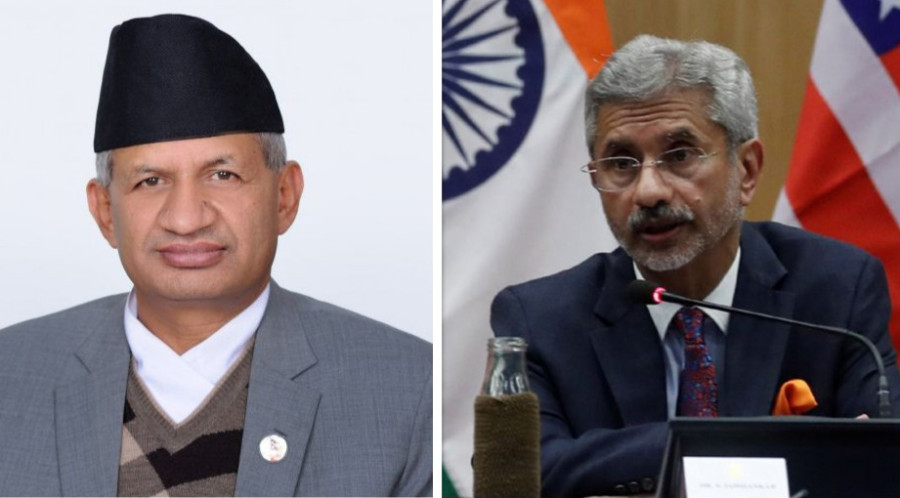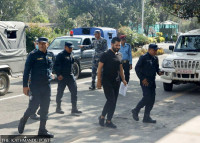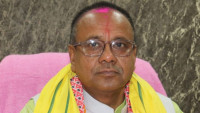National
Five things that will likely dominate the Nepal-India Joint Commission meeting
India’s External Affairs Minister S Jaishankar arrives in Kathmandu today for the long-awaited meeting.
Post Report
Although the fifth meeting of the Nepal-India Joint Commission, being held after a long interval of three years, is expected to rehash issues that have been discussed in the past, Nepali officials are hopeful that the two sides can have an extensive conversation focused on some key subjects.
The visit of S Jaishankar, India’s newly appointed external affairs minister, is the first high-level visit from India since the reelection of Narendra Modi earlier this summer. According to foreign ministry officials, Nepal is eager to move forward and execute some of the newer proposals made during Prime Minister KP Sharma Oli's visit to India in April instead of finding common ground to expedite projects that have lingered on for years.
[Related Story: Nepal-India Joint Commission will only review past agreements, with nothing new on the agenda]
Here are some key agendas the two sides will potentially take up during Wednesday’s bilateral meeting.
It all comes to politics
Nepali officials are likely to push forward holding regular meetings between various levels in the two governments, which they hope will accomplish two things in addition to following up on issues of bilateral significance: help create common positions on issues of regional significance (did somebody say Kashmir?) during international forums and encourage open exchange of ideas on regional and global issues. Teams from both sides are also expected to discuss the early submission of the report of the Eminent Persons’ Group on the relations between the two countries.
Drawing the line
Management of the open border is one of the most common—and perhaps most significant—issues on the agenda during any Nepal-India bilateral meetings. Beyond the routine agreement to denounce all forms of terrorism, the two sides are expected to discuss security arrangements in the border, holding regular meetings of all security-related mechanisms, and holding the meeting of the joint working group on border management and border district coordination committees. One particular thing that may appear in Wednesday’s discussion is the issue of demarcation, including in Susta and Kalapani, and installation of border pillars to resolve the dispute of cross-holding properties along the no-man’s land.
Officials who spoke to the Post said the Indian side may also raise the issue of an extradition treaty and mutual legal assistance. The southern neighbour has repeatedly stressed the need for strengthening the legal framework to counter their common cross- border security challenges and trafficking of humans.
Show us the money
There is a laundry list of projects that are sitting in various stages between agreements and implementation. Among them, the cross-border rail projects will likely be high on the agenda. Officials are also likely to hash out ways to move forward plans for Raxual-Kathmandu railway, whose preliminary study has been completed.
One of the major discussions could feature the long-awaited finalisation of projects to utilise grant and loan components offered by New Delhi for reconstruction. The rebuilding of hundreds of infrastructure projects have been stalled after pledges of foreign assistance failed to materialise. The Indian government had particularly signed an agreement to provide $50million in grant to reconstruct health facilities, but officials say no progress has been made in the last three and a half years.
Let’s talk about trade
At a time when the trade deficit with India continues to widen, Nepali officials are likely to propose an amendment to a number of trade and transit treaties, while requesting lifting of tariff-rate quota on Nepali origin items, removal of non-tariff barriers and expansion of market access opportunities for Nepali products.
The two sides are also expected to discuss the establishment of trade and customs office in Dhangadi, the Gurifanta trading point, and bringing the Gularia-Murtiya/Rajanwa border points into operation.
The details are in the water
By now, it’s no secret what happens every year in the monsoon. Nepali villages bordering India face massive flooding after torrential rains over the past few days, there are again concerns that the disaster was caused largely due to rapid road and infrastructure construction by India on its side of the border. Nepali officials say inundation issue will feature prominently during the meeting, including the implementation of a joint report on inundation in Nepali side of the border.
Add to that, follow-up on hydropower projects about half a dozen canal projects and controversies surrounding compensation to Nepali land-owners affected by the Koshi and Gandak. The two sides will also discuss integrated plans for flood forecasting and a master plan for flood management, primarily in the bordering areas.
Related stories:
- Foreign minister says Kashmir issue should beresolved through dialogue
- Eminent Persons' Group report continues to gather dust
- Both Nepal and India have done little to address flooding along the border




 12.12°C Kathmandu
12.12°C Kathmandu














